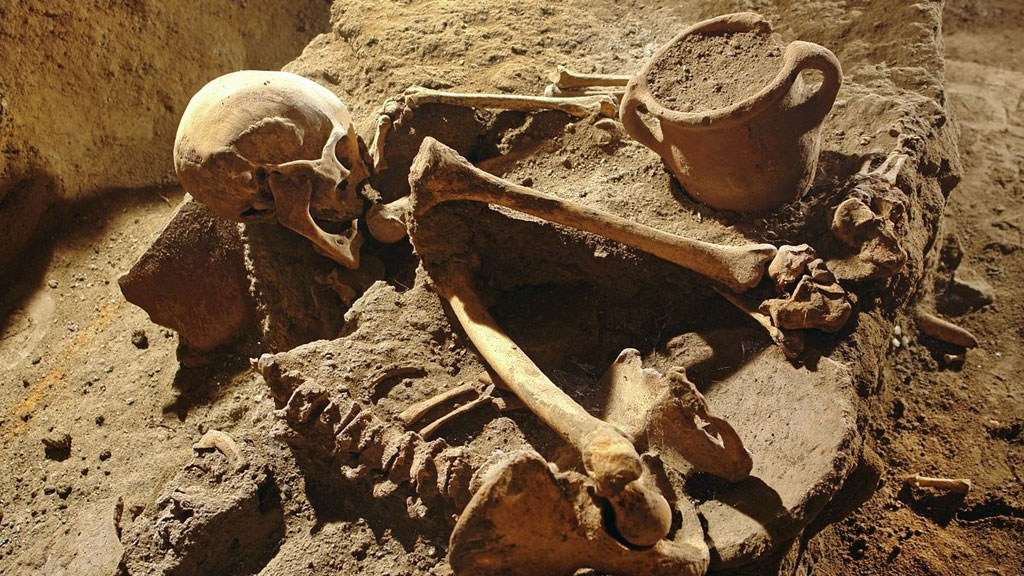April was a great month for Iranian scientists and researchers, as it included several archeological discoveries throughout the country that contribute to better understanding Iran’s rich cultural diversity and complexed history.
Remains of an underground city, thought to be over 2,000 years old, were unearthed in present day Samen, located roughly 400 kilometers west of Iran’s modern-day capital, Tehran.
The ancient city is thought to have been built between the fall of the Achaemenid Empire (550-330 BC) and rise of the Parthian Empire (247 BC-224 AD), according to Ali Khaksar, the head of the provincial office of Iran’s Cultural Heritage, Handicrafts and Tourism Organization.
“We gave this city a temporary name, “the underground city of Samen” as it is located under the modern city of Samen,” Khaksar had explained to Khabar Online.
The underground network consists of interlinked tunnels, halls, corridors, and 25 rooms, which served as houses. About 60 complete skeletons were found in nine of the rooms. According to scientists, the total area of the underground city could occupy more than three hectares.
Excavations of the site began in 2005 and have continued to this day.
Hamadan, the province where Samen is located, is believed to be one of Iran’s oldest settlements, and perhaps one of the oldest in the world. It was the first capital city of the first dynasty ruling Iran, namely the Median Empire. In 2006, the Iranian Parliament named Hamadan the “Capital of Iranian History and Civilization.”
Earlier in the month, Mother Nature provided a boon to archaeologists when winds swept through the southeastern town of Fahraj, in Kerman province, and uncovered several artifacts, including human remains – giving a small glimpse into what is a completely new find.
A sandstorm exposed ceramics, water pipes, brick walls, temple debris and human bones. What lies deeper is still unknown. Archaeologists have yet to determine the site’s age, and whether it is a necropolis or a settlement. Officials have cordoned off the area to prevent looting and artifacts making their way onto the black market.
Iran, located along the southern coast of the Caspian Sea, boasts 21 UNESCO World Heritage Sites, the third-largest number in Asia and the 11th largest in the world.








 Russian peacekeeping forces, deployed in the Karabakh (Garabagh) region of Azerbaijan since 2020, have commenced their withdrawal from the area.
Russian peacekeeping forces, deployed in the Karabakh (Garabagh) region of Azerbaijan since 2020, have commenced their withdrawal from the area.
 The number of evacuees from flooded areas in Kazakhstan has reached 97,852 people, including about 32,856 children since March 27.
The number of evacuees from flooded areas in Kazakhstan has reached 97,852 people, including about 32,856 children since March 27.
 The Islamic holy month of fasting, Ramadan comes to an end this week with the celebration of a joyous festival called Eid (meaning “festival” in Ar...
The Islamic holy month of fasting, Ramadan comes to an end this week with the celebration of a joyous festival called Eid (meaning “festival” in Ar...
 Azerbaijan officially unveiled the logo for the upcoming 29th session of the Conference of the Parties to the United Nations Framework Convention o...
Azerbaijan officially unveiled the logo for the upcoming 29th session of the Conference of the Parties to the United Nations Framework Convention o...



